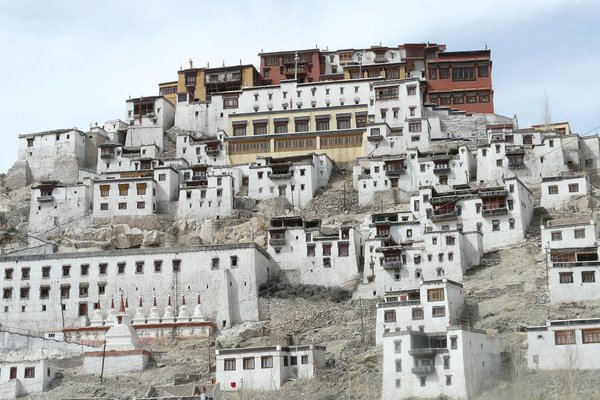India
Cold Desert Cultural Landscape of India
The Cold Desert Cultural Landscape comprises parts of Ladakh, Spiti and Kinnaur. The landscape is characterized by very high elevation and very little rain. The inhabitants of its scattered settlements practice their own distinct Buddhist culture, which is visible in the many Gompas. The region is also a retreat for the Snow Leopard, Tibetan Antelope and Himalayan Wolf.
Site Info
Official Information
- Full Name
- Cold Desert Cultural Landscape of India (ID: 6055)
- Country
- India
- Status
-
On tentative list 2015
Site history
History of Cold Desert Cultural Landscape of India
- 2015: Added to Tentative List
- Added to tentative list
- Type
- Mixed
- Criteria
Links
- UNESCO
- whc.unesco.org
All Links
UNESCO.org
- whc.unesco.org — whc.unesco.org
Community Information
- Community Category
- Natural landscape: Desert
- Cultural Landscape: Continuing
Travel Information
Recent Connections
News
No news.
Recent Visitors
Visitors of Cold Desert Cultural Landscape of India
Community Reviews
Show full reviewsSolivagant
Cold Desert Cultural Landscape of India
Cold Desert Cultural Landscape of India (On tentative list)

Whilst reviewing the Mughal Gardens in Kashmir I noted that the T List “Cold Desert Cultural Landscape of India” was also un-reviewed and, to date, has only 7 recorded visitors among our community – including myself for our trip back in 1983. I wonder why? Possibly because there are no other (T)WHS "ticks" available from this lengthy journey....or because the area is only accessible by road in Summer (when people are less likely to be travelling to India for other reasons) and is extremely cold in winter for those who fly in after touring elsewhere?
Although Indian Kashmir/Srinagar has been closed to normal tourism on and off across the past 35 years, Ladakh has remained relatively easily accessible by air from e.g Delhi or Chandigarh, or by the Manali to Leh highway opened in 1989 which misses out Jammu/Kashmir altogether! I would suggest that those who been to India without visiting Ladakh have been missing a great experience - whether you want the Buddhist culture or the world class trekking and wild life viewing - or all of these! And, even if it never gets that UNESCO inscription, it is well worth seeing.
When it first appeared on India’s T List in 1998 it was as 2 small separate cultural sites (“Hemis Gompa” and “Buddhist Monastery Complex Alchi, Leh”). In 2015 these were replaced by/incorporated into the current entry which covers a much larger area (“around 9,898,000 hectares”) as a …
Keep reading 0 comments